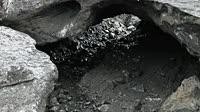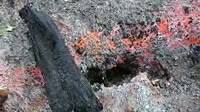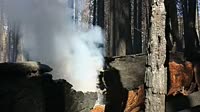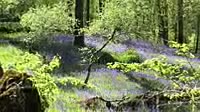Timelapse footage of a slime mould forming reproductive sporangia. Despite its name, a slime mould is not a fungus, instead being an amoeba-like protozoan. After its feeding phase, it develops these tall fungus-like sporangia, which bear its reproductive spores. These are released as the sporangia dry out, and are dispersed by wind and insects. The spores can remain dormant for years, germinating when conditions are right and forming new single-celled amoeba. These feed on bacteria, but when food is scarce the individual cells join together, forming a multinucleate body called a plasmodium. This moves around hunting bacteria and other microorganisms. See clip K004 7123-6 for the slime mould moving around as a plasmodium.
Details
WebID:
C01840404
Clip Type:
RM
Super High Res Size:
1920X1080
Duration:
00:00:36.000
Format:
QuickTime
Bit Rate:
25 fps
Available:
download
Comp:
200X112 (0.00 M)
Model Release:
NO
Property Release
No













 Loading
Loading